Ellie goes for the kill in The Last of Us Part II
Neil Druckmann, creative director on the The Last of Us Part II, was nervous going into E3.
“When you’re in it, when you’re working on something for so long you lost the forest from the trees,” he told me as we chatted at Sony’s PlayStation booth here at the LA Convention Center. He’d played through a demo of the game for a small group of reporters and was now cycling through one-on-one interviews. He’d mentioned those nerves in a tweet days before the show.
“At any moment, as we’re working on this demo and animation and design and sound and music is all coming together you’re like, ‘is this good?’” he explained. “I don’t know. I could tell you five things we could fix to make it better but I don’t even know where it is, how it compares to other games and that’s the nervousness.”
“I like it. I don’t know how other people are going to react to it.”
The Last Of Us Part II is one of the marquee upcoming releases for the PlayStation 4. It’s a successor to the emotional, acclaimed 2013 PS3 third-person adventure in which players guided two survivors, Joel and Ellie, west through a devastated United States. Joel took the role of father figure in the first game, but he’s been little seen in the promotion for the sequel.
At Monday’s E3 demo, Ellie took center stage in a harrowing fight for survival.
Since the demo debuted, some people have questioned how real it was, and others have simply been wondering what it says about the new game and how it all will work. Others have recoiled from the demo’s violence, a topic, that, like the others, Druckmann tackled in conversation with me at E3.
The E3 demo is bookended with a kiss between a slightly older Ellie and another woman, but the main parts involved Ellie sneaking up on and then brutally fighting a pack of human enemies. She stabs one woman through the throat, and drives a pick into a second man’s face. She hides under a car and shoots a woman point-blank in the face, before wrestling with another man on the ground and shooting him as well.
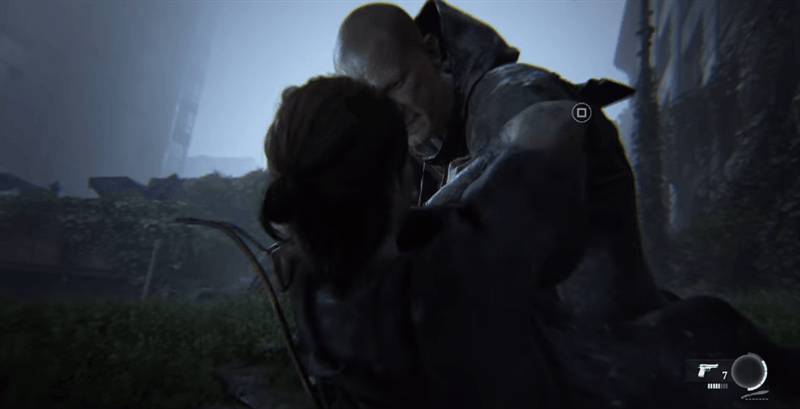
She hides in the bushes as a man is hanged and disemboweled. It’s grisly. It’s impressive. It looks impossibly smooth, to the point that it’s easy to wonder how much of it is “real” gameplay. Plenty of E3 demos, after all, are enhanced with smoke and mirrors techniques.
“Those were all real systems,” Druckmann said. “So at an E3 demo you take complicated systems that are random and we’re making them deterministic and we play it a lot and rehearse it and choreograph it, so we’re showing off very specific things. But those are all real systems that players will experience when they play the game.”
The systems shown in the demo are intended to convey how much more dangerous enemies in the new game are and how many more ways players will be able to deal with them.
“We wanted to make our enemies more threatening, and that meant making them smarter,” Druckmann said. “So we kind of rewrote the awareness system because we have much larger levels with more hiding spots and more verticality – because now there’s a jump button – they need ways to traverse all those complicated ways through the level.”
“They communicate with each other much more than they have before. In the past, in the previous game, if anybody saw you, immediately everybody in the area would know where you are. Now there’s information propagation. So whoever sees you, they have to call it out. Whoever hears you then has to call it out.”
In the demo, he pointed out, characters whistle to alert one another bit by bit. He says you are given a window to stop the person who spots you before they alert the next person.
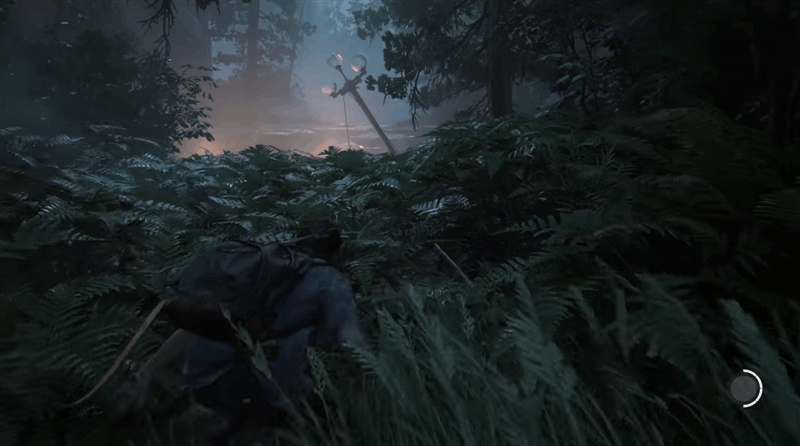
There are some other little new systems glimpsed in the demo, he said. Characters can pick things up while running, as scene when Ellie grabs a bottle and hurls it mid-run. Characters can still grab an enemy and hold them hostage, but can now do a quick-turn to change direction. Ellie can now crawl on the ground and aim her gun from a prone position.
“We have this concept of analogue stealth. So, in other games, including Uncharted 4, when you were in tall grass or some kind of vegetation covers you, you’re completely hidden.” That’s not possible in this new Last of Us. A meter on the lower right shows the relative amount of stealth cover something provides.
“The smaller the circle, the more hidden you are. You’re never fully hidden when you’re in foliage. It changes how close an enemy has to be to spot you.”
The demo was very violent, as was the game’s trailer at Paris Games Week late last year. It’s made some critics recoil. I asked Druckmann if he’d heard that feedback and what he made of it.
“We’re making a game about the cycle of violence and we’re making a statement about violent actions and the impact they have on the character that’s committing them and on the people close to them,” he said. “And our whole approach is to say, ‘We want to treat this as realistically as possible.’ When you stab someone — if you watch reference videos, which we have, it’s gross and it’s messy and it’s not sanitised like you see in most movies and games. And we wanted to get the player to feel that.”
The idea, he underscored, was “for the player to feel repulsed by some of the violence they are committing themselves. It felt like that is the most honest way to tell this story.”
One person’s video game violence is another person’s video game fun. For better and at times for worse, the very essence of fun interaction in video games has deep roots in violent interaction, from the primitive days of one batch of pixels causing another to blink out of existence to modern times, when blinking an enemy out of existence often involves a gory finishing move.
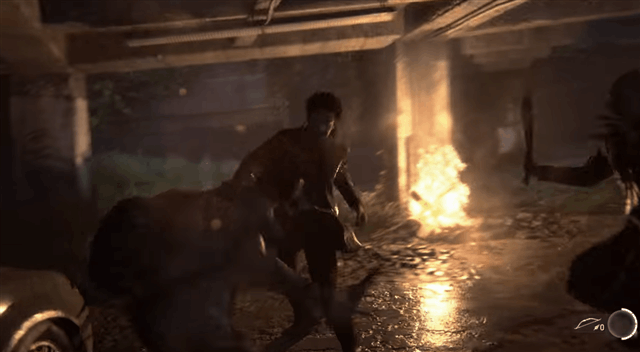
Fun in video games, I suggested to Druckmann, often goes hand in hand with virtual violence. “This might be a semantic argument,” he replied, “But we don’t use the word ‘fun’ with The Last Of Us. We say ‘engaging.’ It needs to be engaging. If the stakes are real, if you are invested in the character and their relationship, you’re going to go through and commit these actions that might – and should be – at times making you feel uncomfortable to progress in the story, to see what’s happened to the character and at times to struggle with their motivation versus your moral line.
“The kind of stories we tell, with strong specific characters, we like that at times you’re not in line with the character. It kind of makes you question philosophically: where do I stand on these things? And that was a big part of the first game and a lot of the stuff we learned from the first game we’re applying to this game.”
And on a lighter note … there was that kiss.
How’d they do that?
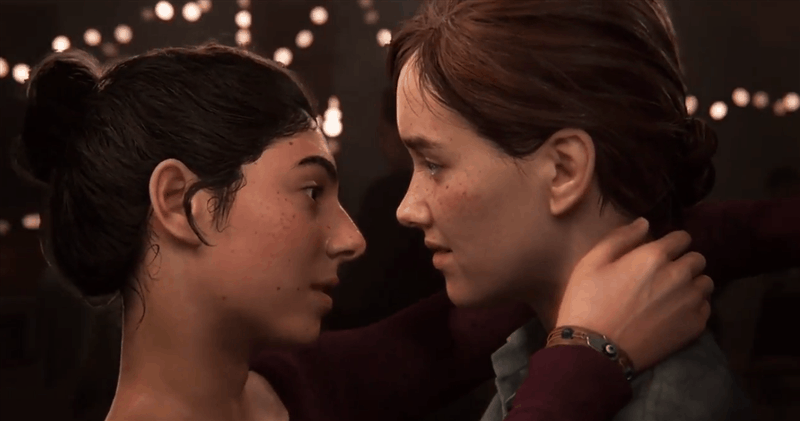
Druckmann took a stab at explaining: “”Since Uncharted 4, we’ve done facial capture. You have cameras kind of in front of your face. That means I can only get this close to a person before their camera collides with my camera.” He was gesturing a distance several inches from his face.
“So we had to take the cameras off and do it old-school like we’ve done in the past and shoot reference footage and animate something from scratch. But the animators always ask, ‘Can you give us something?’ Because the face is so complex. So then we had to put the cameras back on and have them turn to the sides – Ashley [Johnson] and Shannon [Woodward] – and pretend like they’re kissing but they’re just kissing the air. And if it sounds awkward, it’s really freaking awkward there when you’re trying to give direction on the set about how they should move their faces!
“But then we have like, soft mods, the way soft skin can collide with another person’s soft skin. We have joins on the nose. We have what’s called sticky lips which is how when your lips separate they don’t separate evenly, they kind of stick on the edges. [This is] all tech developed to make our performances more subtle and allowing us to do something like a close-up kiss.”
He said it allows the game’s writing to be more subtle, because it lets them include subtext that goes behind a character’s eyes. Johnson and Woodward recounted their own experiences of the mo-cap session at an E3 panel earlier today, and it does sound like it was a novel challenge.
The Last of Us Part II will be out at some point in the future on PS4.
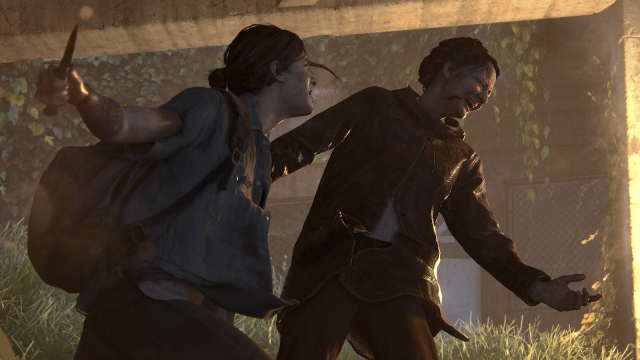
Comments
3 responses to “The Last Of Us Part II’s Violence Is Designed To Be Repulsive”
Interesting to hear him say that. Part of my dissatisfaction with the trailer was that it didn’t feel repulsive in the same way the first game did. I think the reason for that was that it was bookmarked by the cinematic of that woman telling Ellie how cool she was and how everyone should be afraid of her. It made the gameplay shown feel more like a celebration of what Ellie was doing than anything else. I guess context is everything. Hopefully the full game gives the context for the violence to feel repulsive.
I think much of the context here is Ellie herself. It’s all well and good to say that other people are afraid or impressed by her exploits, but what of Ellie herself? Does she feel the same way?
I think there will be an effort to draw a line between those things so that we the player feel more in tune with the actions we are performing as Ellie and feel at odds when other characters congratulate us on whatever events have transpired.
-B
Seeing Ellie smile at the end kinda broke my heart, I have a nasty feeling shits gonna go south.
(That and the original teaser where she tells Joel she’s gonna kill every last one of “them”)
I think this quote sums up what made TLOU such a masterpiece. Not giving concessions to “fun” allowed them elevate the medium.
Pretty much everything Druckmann says gets me nodding in agreement.